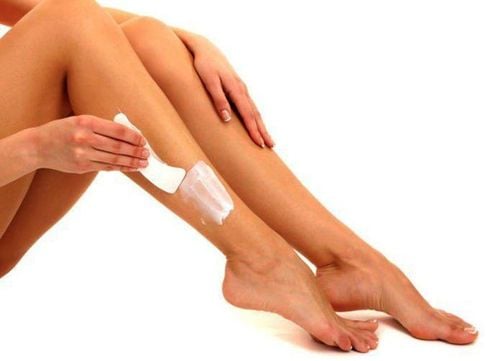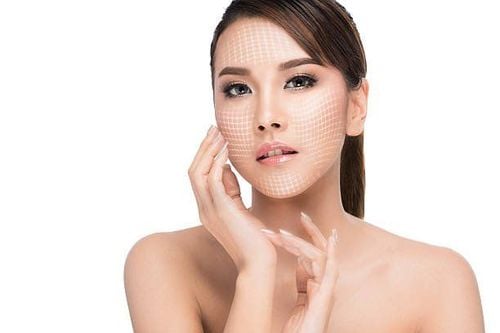This is an automatically translated article.
Hair grows everywhere on the body, including the face, hands and feet. Although this is a benign structure, most people probably want permanent hair removal for cosmetic reasons. However, many people worry about whether to permanently remove hair or not as well as how to safely remove hair permanently.1. Should hair removal be permanent or not?
What is permanent hair removal? This is a permanent hair removal method that directly affects the hair follicles, completely removing hairs or causing hair to stop growing. In case if the hair does grow back, it is also very weak and pale in color, not causing loss of aesthetics for you.
The areas of the body that people often need permanent hair removal are legs, arms, bikini area, underarms or the whole face.
Accordingly, the need for permanent body hair removal is essential to maintain healthy hygiene habits as well as ensure aesthetic credibility, bringing confidence in your own image in front of the opposite person. Women tend to do this more than men; However, both men and women need to understand the importance of removing excess body hair.
2. Methods of permanent hair removal
Permanent hair removal procedures always require multiple sessions to maintain the results achieved. Among the hair removal methods that are said to be effective for permanent hair removal, only the use of electrolysis can guarantee a lasting effect over time.
However, another hair removal method that also provides long-term results is laser hair removal. However, hair removal practitioners always take the time to attend sessions continuously to maintain optimal results.
2.1. Electrolysis Hair removal The technician will conduct electrolysis using a needle to deliver shortwave radio frequencies into the hair follicles to destroy them. Then, each hair will be further removed with tweezers.
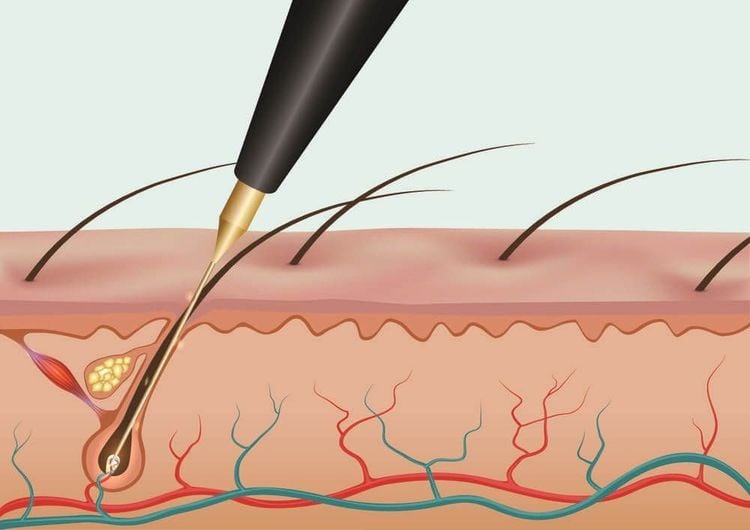
Phương pháp triệt lông vĩnh viễn bằng điện phân
In fact, electrolysis can be performed on nearly any part of the body. In addition, electrolysis also works on any hair type, even light colored hair.
Due to the hair growth cycle, people who want to remove hair are often required to have multiple electrolysis sessions to achieve the desired effect. The number of sessions can vary depending on the body area, individual sensitivity and the amount of hair present on the skin.
However, once the technician has removed all the hair from the area to be removed, the results can be considered permanent and will not require any additional appointments.
After electrolysis treatments, skin may experience stinging, redness or irritation at the hair removal site. Skin infection or scar tissue in the electrolytic area can also occur, but is very rare.
Nowadays, several at-home hair removal machines are available for everyone to do on their own. However, dermatologists always recommend this technique to be performed by someone experienced in electrolysis for best results.
2.2. Laser Hair Removal Laser hair removal involves the use of a high-heat laser to destroy deep within the hair follicle. The technician can use laser hair removal anywhere on the body, except around the eyes.
Generally, the hair removal results that can be obtained is a 10–25% reduction in the number of hairs on the skin immediately after the first session. As the hair grows back, the hairs also tend to be lighter in color and less dense. Once the hair has stopped growing, the hair follicles weaken so the hair may not appear again for months or years.
Accordingly, laser hair removal works best on dark and coarse hair. However, permanent hair removal will not work on light, gray or red hair.
Participants with laser hair removal are often required to have a series of sessions to remove all of the hair in a specific area of the body. The best sessions take place every 4-6 weeks.
There are risks of laser hair removal, especially if the technician is inexperienced or not properly trained. Accordingly, the laser can cause stinging pain and discomfort during the procedure.
After treatment, the skin may be red or irritated for several days. Blisters or scarring can also occur at the waxing site but are rare.
On the other hand, the effect of the laser also causes the skin to be affected by sunlight. It is important for people undergoing laser hair removal to protect their skin from the sun during treatment, by covering up when outdoors, limiting use tanning beds and get in the habit of applying sunscreen, even when indoors.
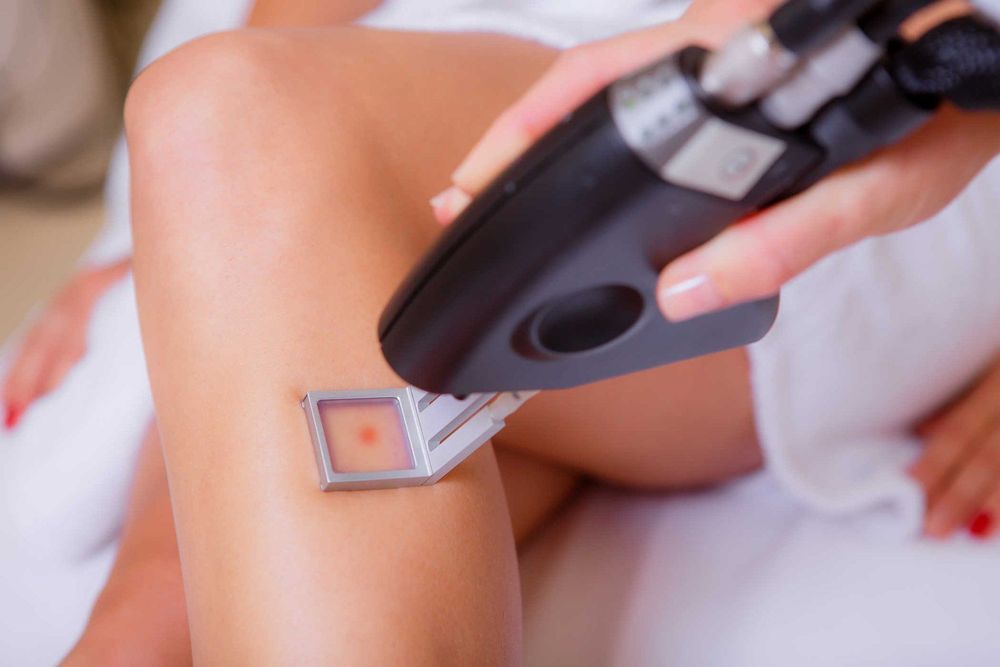
Phương pháp triệt lông vĩnh viễn bằng laser
2.3. Hair removal with hair removal creams Some strong depilatories are prescribed by a doctor for permanent hair removal. For example, a hair removal cream with an ingredient called eflornithine can prevent hair growth when used regularly. The FDA also reported in 2000 that this product is generally safe to use to remove unwanted hair from the entire face.
However, to use eflornithine safely, users should follow their doctor's advice, adhering to applying the cream twice a day. After application, the treatment areas should not be washed for about 4 hours to give the cream time to work.
Although eflornithine is generally safe, the risk of a possible reaction to the cream is sometimes unavoidable. Pregnant women should consult their doctor before using the cream. If a skin reaction is suspected to be caused by the application of eflornithine, use should be discontinued immediately and the physician reported as soon as possible.
3. At-home hair removal methods Although some hair removal methods provide results that last for months or years, very few are truly permanent, including the ones mentioned above.
Accordingly, there is also no way to permanently remove hair at home. However, the following methods can reduce hair growth relatively, can give good results lasting about 4 weeks, but ensure minimal harm to the skin. These include:
Waxing Hair removal results can last about 3-4 weeks. Waxing can be painful and uncomfortable. Waxing usually takes longer and is usually done by a professional, so it can be expensive. However, some self waxing patches are also available so people can wax themselves at home.
Waxing can be done on the whole body, including the face. The melted wax is applied to the skin in strips and pulled out in the opposite direction of hair growth. The wax adheres tightly to the hair and the heat causes the hair follicles to dilate slightly, resulting in the removal of the entire hair, including the base. With conventional waxing, since all of the original hair is removed, the new hair that grows will weaken over time and so hair removal becomes easier and less painful.
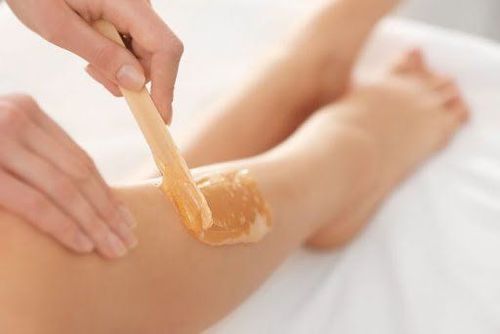
Bạn có thể triệt lông vĩnh viễn tại nhà bằng Waxing
People with overly sensitive skin may experience redness, irritation and swelling after waxing. Furthermore, waxing may also be contraindicated when the individual is undergoing other skin treatments such as peels, topical medications, or laser treatments.
Using sugar This is an ancient hair removal technique that is now back in popularity. This can be done at home with a simple recipe of sugar, lemon juice and water to create a paste that is applied to the skin and then pulled out in the opposite direction of hair growth.
Like waxing, the hair is removed from the root and the results last for 3-4 weeks. Using sugar water is usually less painful and less damaging to the skin than waxing.
Se thread Thread is the ideal tool for hair removal in small areas such as the face. Besides the advantage of removing hair at the root, the thread is very precise, so it is ideal for shaping eyebrows. This process is done quickly by using a thread to pull out many hairs at once.
The results of hair removal with a hair removal can only last 3-6 weeks but may vary depending on hair growth. Pain, discomfort, and redness are common during threading. Accordingly, people with sensitive skin may experience significant redness, swelling and irritation when performed.
Use Turmeric Turmeric is a natural spice that is said to have hair removal properties thanks to natural chemicals that can slow or stop hair growth, thereby weakening the pores. While the results are slow, turmeric can be used in conjunction with other hair removal techniques for long-term benefits.
In addition, turmeric is safe for most skin types, helping to reduce pigmentation and inflammation thanks to its antibacterial properties. People use turmeric to remove hair by mixing turmeric with lemon, honey, flour, milk or yogurt into a paste, apply to the skin and let it dry, gently rub it clean to follow the hair.
In short, permanent hair removal is a very popular cosmetic need. Current permanent hair removal methods are often expensive, but "permanent" sometimes needs to be accepted at a relative level. Accordingly, if you want to remove hair permanently, it is best to consult a dermatologist for the right method and choose to do it with an experienced technician. At the same time, home hair removal methods should also be considered, in order to get immediate and safe results for the skin.
Please dial HOTLINE for more information or register for an appointment HERE. Download MyVinmec app to make appointments faster and to manage your bookings easily.






